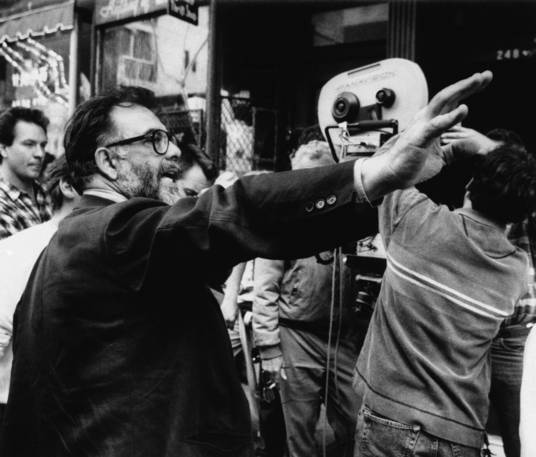


For many, Francis Ford Coppola [2]’s Godfather films are untouchable classics of cinema mastery. For others, like those in the Italic Institute, they are an abomination, as John Mancini, an Institute analyst says: “Coppola is no hero. In The Godfather, he did to Italian Americans what D.W. Griffith did to African Americans in the 1915 film, Birth of a Nation: He demonized them as criminal. He created a tribute to thieves and murderers.”
To counter the publicity surrounding the publication of Coppola’s The Godfather Notebook [3] for the 2016 Christmas season, the Institute produced a video that you can catch on youtube, that attempts to cast Coppola as a villain, a “Christmas Grinch” who practiced purposeful defamation “even when he had the chance to tell the true stories of real Italian American heroes and heroines.” From there they launch into a hagiographic gallery of Italians Coppola might have chosen to make films about: A.P. Giannini, founder of Bank of America; Rocco Petrone of NASA and Governor Ella Grasso, all mentioned in this brief piece pro- moting the Institute’s work.
Now whether you agree with the Italic Institute or not, there can be no doubt that Coppola’s work has had a great impact on the way Italians have been presented in American culture. His latest addition, The Godfather Notebook may not be for everyone, but for those who know the film well, it is a must buy.
Beginning with an insightful introduction, the Notebook, brings us behind the scenes of the film’s creation and into the mind of one of the most important directors of American cinema. From his an- notations to the pasted-in pages from the novel, to excerpts from the screenplay, and stills from the shoot, Coppola takes us through the think- ing behind the making of his magnum opus.
If you know the film well, you will appreciate the ideas surround- ing the decisions the director made before and during the production. What was thought and left out and put in gives the reader an idea of all the possibilities that the artist encountered on preparation for his cinematic journey.
For each of the fifty scenes imagined there are typed notes—full of the typos that come in first-drafts— scene synopses, era considerations, possibilities for imagery and tone, core themes for each, and potential pitfalls that would detract from the director’s effort to capture his vision. Many of the scenes never make it into final production; some were shot and never included; others were planned much differently than they turned out. All in all, the value here is the unique access the Notebook gives us to the way Coppola worked, and this is the beauty of the book.
Coppola’s introduction becomes both a rationale for making a film on a subject he had little knowledge of, and an account of what he calls “the downs and downs” of its making, for there were many problems the young director encountered from the casting through the editing that come to light on these pages. His honesty comes through in lines like, “I think I made the notebook out of profound fear. It’s important to un- derstand that at the root of it all, I wans terrified.”
From this notebook came the screenplay, which can now be seen as a collaboration that goes beyond the author and director to include suggestions from actors like Marlon Brando [4]. So whether your on side of the Italics Insitute or not, The Godfather Notebook will bring fuel to fire your thinking about his monumental work of literary interpretation that led to the cinematic creation of one of the most controversial films of our time.
As for the Italic Institute’s take on this, one could only wonder why they are so vocal about fictional portrayals of Italian Americans and so silent about the real-life anti-American antics of the likes of Joseph Arpaio and Carl Pasquale Paladino. Could it be they suffer from irony deficiency or reality vision impairment?
Information of the book >>> [3]
Fred Gardaphe:
Distinguished Professor of English and Italian American Studies at Queens College/CUNY and the John D. Calandra Italian American Institute
Source URL: http://440468.6bgr9ubv.asia/magazine/focus/art-culture/article/mind-godfathers-father
Links
[1] http://440468.6bgr9ubv.asia/files/francis-ford-coppola-set-godfather-part-iii-1991jpg
[2] https://en.wikipedia.org/wiki/Francis_Ford_Coppola
[3] https://www.amazon.com/Godfather-Notebook-Francis-Ford-Coppola/dp/168245052X
[4] https://en.wikipedia.org/wiki/Marlon_Brando